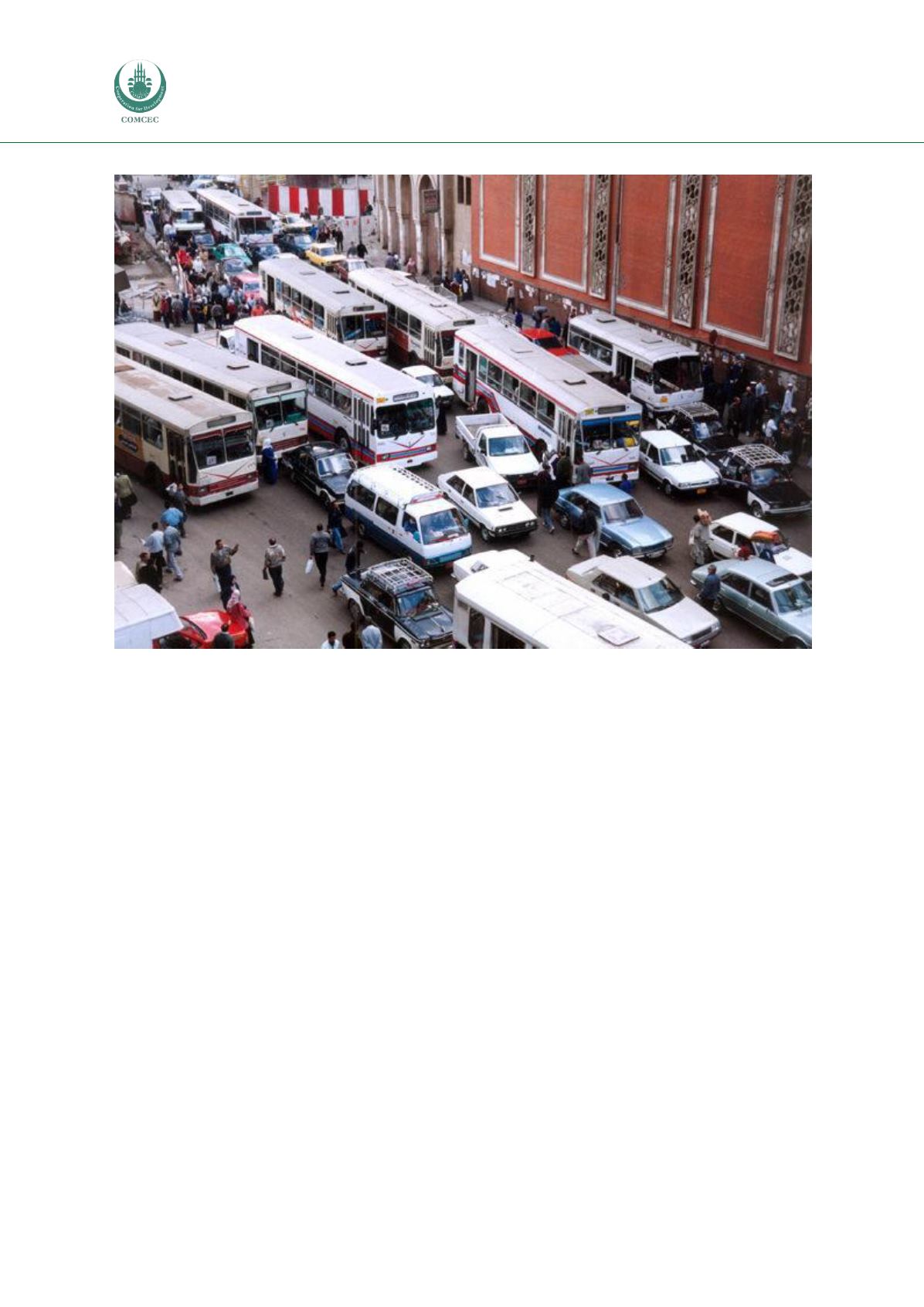

Urban Transport in the OIC Megacities
80
Figure 20: Typical street scene in Cairo
Source: Page 1 World Bank 10/11/06 Proposed Urban Transport Strategy
No clear functional hierarchy of roads
-
There is no clearly defined routes for traffic which is
strategic, local, servicing nor are there any designated routes for public transport and NMT.
A lack of traffic signal control at intersections results in underutilization of intersection
capacity:
This situation is aggravated by a driving culture that requires drivers to give little
consideration to other road users if they are to complete their travel in a reasonable amount of time.
Most cities the size of Cairo have extensive centralized control of signalized intersections, a strategy
that can be demonstrated to reduce travel time by about 20% as well as increasing the effective
capacity of the road network “
There is an insufficient number of signalized intersections. At many
intersections traffic lights are not visible because of low poles which make it difficult for drivers who are
behind large buses to see them. Some traffic lights are not working properly. Currently during peak
periods, almost all signalized intersections are manually controlled by traffic policemen. Manual
operations are based on an assessment of spot conditions by visual observation by traffic policemen
and/or information received via transceivers. However, it is rather difficult for this manual controlling
technique to maintain an effective synchronization situation between intersections because it tends to
result in a longer cycle length.”. (
Cairo Regional Area Transportation Study, Phase II Final Report,
Volume II, page 4).
Lack of road signs and road markings:
If there are inadequate markings of traffic lanes, signs
giving indications of traffic priority and regulations (such as “Stop” signs at intersections) and
indications of how to reach destinations, drivers respond in ways that appear to minimise their own
travel time, but which in practice increase travel times for all road uses. Drivers cannot be expected
to follow the disciplines that make best use of available road space if there are no road marking or
signs to help them. Changing from the existing “rules of the road” to others that would be more
advantageous to all road users is a very long term process, but it has a relatively low financial cost and
significant benefits.

















